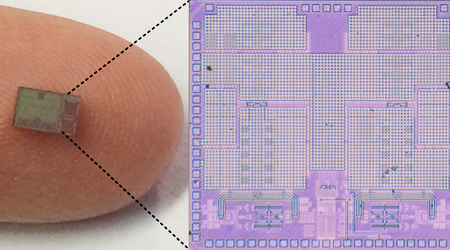Columbia Engineering researchers have invented and demonstrated full-duplex radio integrated circuits — they are capable of implementation in nanoscale CMOS and allow for the simultaneous transmission and reception of data at the same frequency in a wireless radio.

“This is a game-changer,” says Electrical Engineering Associate Professor Harish Krishnaswamy. “By leveraging our new technology, networks can effectively double the frequency spectrum resources available for devices like smartphones and tablets.”
This discovery couldn’t have come at a better time. You see, at present, transmitters and receivers either work at alternating times, or at the same time but at different frequencies. This has proven problematic in today’s “Big Data” era, in which the current frequency spectrum is experiencing an overload crisis. In fact, things are so bad that experts believe today’s wireless networks will not be able to support the data deluge that is expected to come in the near future.
A bit more specifically, today’s modern-day standards like 4G / LTE, support 40 different frequency bands, and there is no space left at radio frequencies for future expansion. And this isn’t even getting into the challenge facing tomorrow’s 5G network, which is expected to increase data capacity by 1,000 times.
The ability to have a transmitter and receiver re-use the same frequency could very quickly double the data capacity of existing networks. And where other research group sand startup companies have demonstrated theories pertaining to the feasibility of simultaneous transmission and reception at the same frequency, Krishnaswamy’s group is the first to build an actual tiny nanoscale IC with this capability.
“Our work is the first to demonstrate an IC that can receive and transmit simultaneously,” he says. “Doing this in an IC is critical if we are to have widespread impact and bring this functionality to handheld devices such as cellular handsets, mobile devices such as tablets for WiFi, and in cellular and WiFi base stations to support full duplex communications.”
One of the biggest hurdles the group faced was in trying to figure out how to eliminate the transmitter’s echo, or self-interference. While this challenge was solved, the technology is nowhere near ready for real world implementation. The next step the group wants to take is to test out a handful of full-duplex nodes to understand what the gains are being made at the network level.
“We are working closely with Electrical Engineering Associate Professor Gil Zussman's group, who are network theory experts here at Columbia Engineering,” Krishnaswamy says. “It will be very exciting if we are indeed able to deliver the promised performance gains.”
Via: Columbia University
Advertisement
Learn more about Electronic Products Magazine





